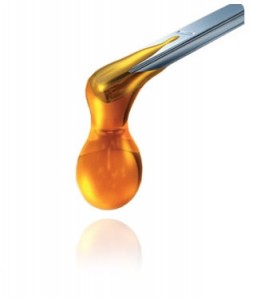TBN and oxidation
Engine lubricants are generally used to reduce friction between moving parts within the interior engine. In addition to the lubricating function, motor oil also serves as a coolant, corrosion protector, and method of removing contaminants from the engine filter. In other words, motor oil holds the same importance to an engine that blood holds for humans. Loss of any essential function of the motor oil will lead to serious engine damage if not treated. Through the oxidation of motor oil, its essential functions are destroyed. This degradation usually begins to cause severe engine damage.
As lubricants degrade, their physical properties (e.g. viscosity) change, leading to increased friction and wear. This degradation is primarily due to base oil oxidation. Oxidation is due to free radical attacks against the base oil’s chemical composition. Base oil is the petroleum component of the lubricant. Generally, the base oil comprises eighty percent of the lubricant, with the remainder being additives.
To fight oxidation in oil we use antioxidants. This fights and terminates free-radical reactions that attack the Carbon hyd bond and destroys the base oil thus creating higher levels of oxidation and putting more demand on the detergents.
Detergents are used to clean up the by product of oxidized oil which occurs when antioxidants can’t neutralize the acids effectively by creating a chemical reaction with sludge, and varnish precursors so to neutralize them and keep them soluble.
Total Base Number does not measure the accumulation of oxidation products or antioxidants, rather, it measures the depletion of a detergents present in an engine oil for the purposes of neutralizing acidic blow-by gases which occurs due to low levels of antioxidants with in the oil. As the detergent is consumed in its role of neutralizing sludge and varnish, the base number decreases from its original new oil value. Monitoring this consumption allows one to proactively replenish the oil through change out before the protection afforded by that additive is lost.
This is one reason why higher levels of TBN’s can mislead you into thinking it is better when in fact all it is stating is that it has higher levels of detergents to keep the engine clean but the base oil can oxidize(or breakdown) faster than one with higher levels of antioxidants which prevents the acids by neutralizing the attacking acids as oppose to cleaning up the by products of the oxidized oil.
More on Additives
Very little unadditized mineral oil is sold as a lubricant. Almost all commercial lubricants contain additives to enhance their performance in amounts ranging from less than 1% to 25% or more. By far the largest market for such additives is in the transportation field, including additives for engines and drivetrains in cars, trucks, buses, locomotives and ships. The function of additives can be summarized as:
- Protect metal surfaces (rings, bearings, gears, etc.)
- Extend the range of lubricant applicability
- Extend lubricant life
| Additive Type | Purpose | Typical Compounds | Functions |
|---|---|---|---|
| Antiwear and EP Agent | Reduce friction and wear and prevent scoring and seizure | Zinc dithiophosphates, organic phosphates, acid phosphates, organic sulfur and chlorine compounds, sulfurized fats, sulfides and disulfides | Chemical reaction with metal surface to form a film with lower shear strength than the metal, thereby preventing metal-to-metal contact |
| Corrosion and Rust Inhibitor | Prevent corrosion and rusting of metal parts in contact with the lubricant | Zinc dithiophosphates, metal phenolates, basic metal sulfonates, fatty acids and amines | Preferential adsorption of polar constituent on metal surface to provide protective film, or neutralize corrosive acids |
| Detergent | Keep surfaces free of deposits | Metallo-organic compounds of sodium, calcium and magnesium phenolates, phosphonates and sulfonates | Chemical reaction with sludge and varnish precursors to neutralize them and keep them soluble |
| Dispersant | Keep insoluble contaminants dispersed in the lubricant | Alkylsuccinimides, alkylsuccinic esters, and mannich reaction products | Contaminants are bonded by polar attraction to dispersant molecules, prevented from agglomerating and kept in suspension due to solubility of dispersant |
| Friction Modifier | Alter coefficient of friction | Organic fatty acids and amides, lard oil, high molecular weight organic phosphorus and phosphoric acid esters | Preferential adsorption of surface-active materials |
| Additive Type | Purpose | Typical Compounds | Functions |
|---|---|---|---|
| Pour Point Depressant | Enable lubricant to flow at low temperatures | Alkylated naphthalene and phenolic polymers, polymethacrylates, maleate/fumerate copolymer esters | Modify wax crystal formation to reduce interlocking |
| Seal Swell Agent | Swell elastomeric seals | Organic phosphates and aromatic hydrocarbons | Chemical reaction with elastomer to cause slight swell |
| Viscosity Modifier | Reduce the rate of viscosity change with temperature | Polymers and copolymers of olefins, methacrylates, dienes or alkylated styrenes | Polymers expand with increasing temperature to counteract oil thinning |
| Additive Type | Purpose | Typical Compounds | Functions |
|---|---|---|---|
| Antifoamant | Prevent lubricant from forming a persistent foam | Silicone polymers, organic copolymers | Reduces surface tension to speed collapse of foam |
| Antioxidant | Retard oxidative decomposition | Zinc dithiophosphates, hindered phenols, aromatic amines, sulfurized phenols | Decompose peroxides and terminate free-radical reactions |
| Metal Deactivator | Reduce catalytic effect of metals on oxidation rate | Organic complexes containing nitrogen or sulfur, amines, sulfides and phosphites | Form inactive film on metal surfaces by complexing with metallic ions |

